Classic sesame seed crusted ahi tuna with a twist by serving it on a bed of shredded green and red cabbage, carrots, thinly sliced radish, and baby zucchini and serving it with a sesame soy dressing with a kick of heat from hot yuzu pepper sauce for the best sesame seed-crusted tuna dinner.
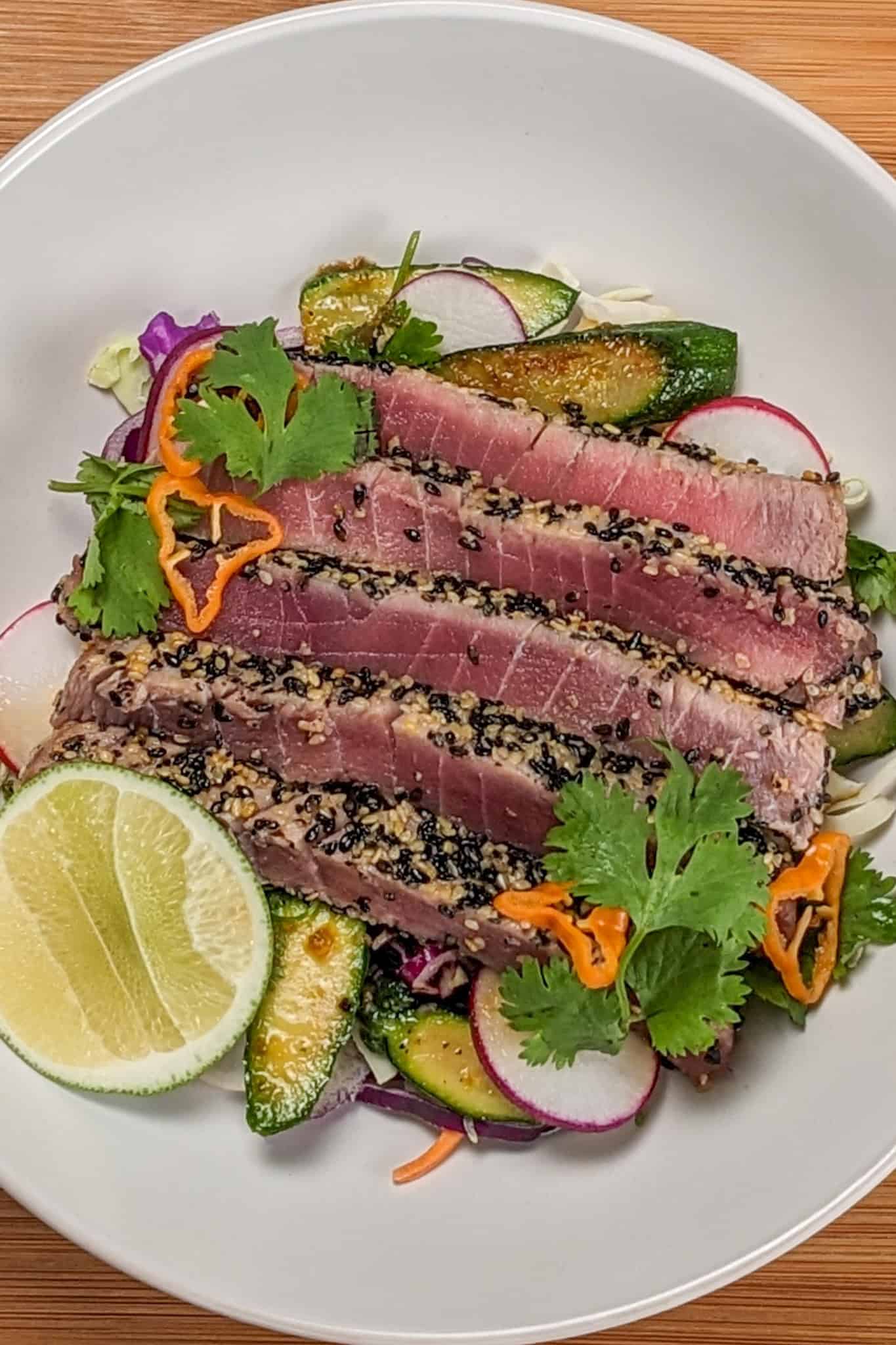
Table of Contents
Jump to:
Irresistible Flavor and Texture
You have to try the Sesame Seed-Crusted Ahi Tuna with Spicy Sesame-Soy Sauce! This recipe features beautiful ahi tuna steaks transformed into a gourmet dish that you can easily recreate in the comfort of your own home. Enjoy the freshness of the fish, perfectly crusted with sesame seeds and seared to perfection.
Served on a vibrant bed of shredded green and red cabbage, carrots, thinly sliced radish, and baby zucchini, this dish not only looks stunning but also provides a nutritious and healthy meal. The best part? The spicy sesame-soy dressing, enhanced with a kick of heat from hot yuzu pepper sauce, adds an irresistible flavor that will leave your taste buds craving more.
A Restuarant Classic
The classic sesame-crusted ahi tuna method showcases a delicate balance of flavors and textures that is highly celebrated. This technique involves encrusting beautiful ahi tuna steaks with a generous layer of sesame seeds before searing them to perfection.
The sesame seeds toast during the searing process, releasing a rich, nutty aroma and adding a delightful crunch to each bite. This not only enhances the texture but also complements the fresh fish, allowing the natural flavors to shine through.
The result is a dish that combines the tender, melt-in-your-mouth quality of fresh ahi tuna with the satisfying crispness of toasted sesame seeds, creating the perfect balanced and exquisite eating experience.
Ahi Tuna VS Other Tunas
Ahi tuna, also known as yellowfin tuna, is different from other tuna species like bigeye tuna, bluefin tuna, and albacore tuna. It is well-known for its firm texture, mild flavor, and versatility, making it popular for both raw and cooked dishes.
On the other hand, bigeye tuna has a higher fat content, resulting in a richer taste and a softer, buttery texture, making it ideal for sashimi and sushi. Bluefin tuna, the most prized and expensive among tuna varieties, has a deep red color, a high-fat content, and a melt-in-your-mouth texture, offering an exceptionally rich and luxurious flavor profile.
Yellowfin and bluefin tuna are often compared for their culinary uses, but each brings unique characteristics to the table. Understanding these differences helps you in choosing the right tuna for your meals, ensuring the best texture and taste experience.
Try These Other Delicious Recipes
- Healthy Poached Egg Avocado Rainbow Tuna Salad
- Spicy Tuna Rice Bowl
- Harissa Carrot Salad
- Hot Honey Sesame Chicken with Nappa Cabbage Stir-Fry
- Bang Bang Crispy Tofu with Egg Fried Brown Rice
- Sesame Chili Salmon Rice Bowl
Ingredients with Steps
To prepare the Spicy Sesame-Soy Sauce, whisk together low-sodium soy sauce, toasted sesame oil, unseasoned rice vinegar, hot yuzu pepper sauce, honey, minced garlic, and grated ginger in a small bowl and set aside. For the vegetables, heat avocado oil in a large skillet over medium-high heat.
Sear sliced zucchini for 2-3 minutes on each side until lightly browned and tender, then remove and set aside. To prepare the tuna, pat the ahi tuna steaks dry, season with salt and pepper, and coat all sides with mixed sesame seeds.
Heat avocado oil over medium-high heat in the same skillet and sear the sesame seed-crusted tuna steaks for 1-2 minutes on each side, aiming for a rare to medium-rare interior. Let the tuna rest for a few minutes before slicing. Serve on a bed of shredded red and green cabbage carrots, thinly sliced red radishes, and fresh cilantro. And garnish with a lime wedge.
Culinary Glossary
This section provides concise definitions of key ingredients and techniques to enhance understanding and improve cooking skills related to this recipe.
Ingredients
- Ahi Tuna: A type of tuna, also known as yellowfin tuna, known for its firm texture and mild flavor. It's often used in raw and cooked dishes; for better results, use sushi-grade tuna, which always comes frozen.
- Sesame Seeds: Small, oil-rich seeds used to crust the tuna, providing a nutty flavor and crunchy texture when toasted.
- Low-Sodium Soy Sauce: A Japanese salty, savory liquid condiment made from fermented soybeans and wheat, used in the spicy sesame-soy dressing that contains about half the amount of sodium than regular soy sauce.
- Toasted Sesame Oil: A fragrant oil made from sesame seeds, used to add a rich, nutty flavor and used only to finish dishes and sauces compared to regular sesame oil.
- Unseasoned Rice Vinegar: Also known as Rice Wine Vinegar, is a mild vinegar made from fermented rice, used to add acidity and balance to the dressing, and does not contain added sugar like the seasoned rice vinegar that is used to make sushi.
- Hot Yuzu Pepper Sauce: A spicy sauce made from yuzu (a Japanese citrus fruit) and chili peppers, adding heat and citrusy notes.
- Minced Garlic: Finely chopped garlic cloves. You can also achieve this by using garlic paste or grated.
- Grated Ginger: Fresh ginger root grated into small pieces using a zester. You can also use garlic paste.
- Avocado Oil: A vegetable cooking oil made from avocados, known for its high smoke point and neutral flavor.
Techniques
- Searing: A cooking technique where food is cooked at high heat until a caramelized crust forms, locking in flavor and moisture.
- Rare to Medium-Rare: Levels of doneness for tuna, indicating that the inside remains mostly raw (rare) to slightly cooked (medium-rare) for optimal tenderness and flavor.
- Pat Dry: The process of removing moisture from food using paper towels to ensure a good sear and prevent steaming.
- Rest: Allowing cooked meat to sit for a few minutes after cooking which helps retain juices and improve texture before slicing.
See the recipe card for quantities below.
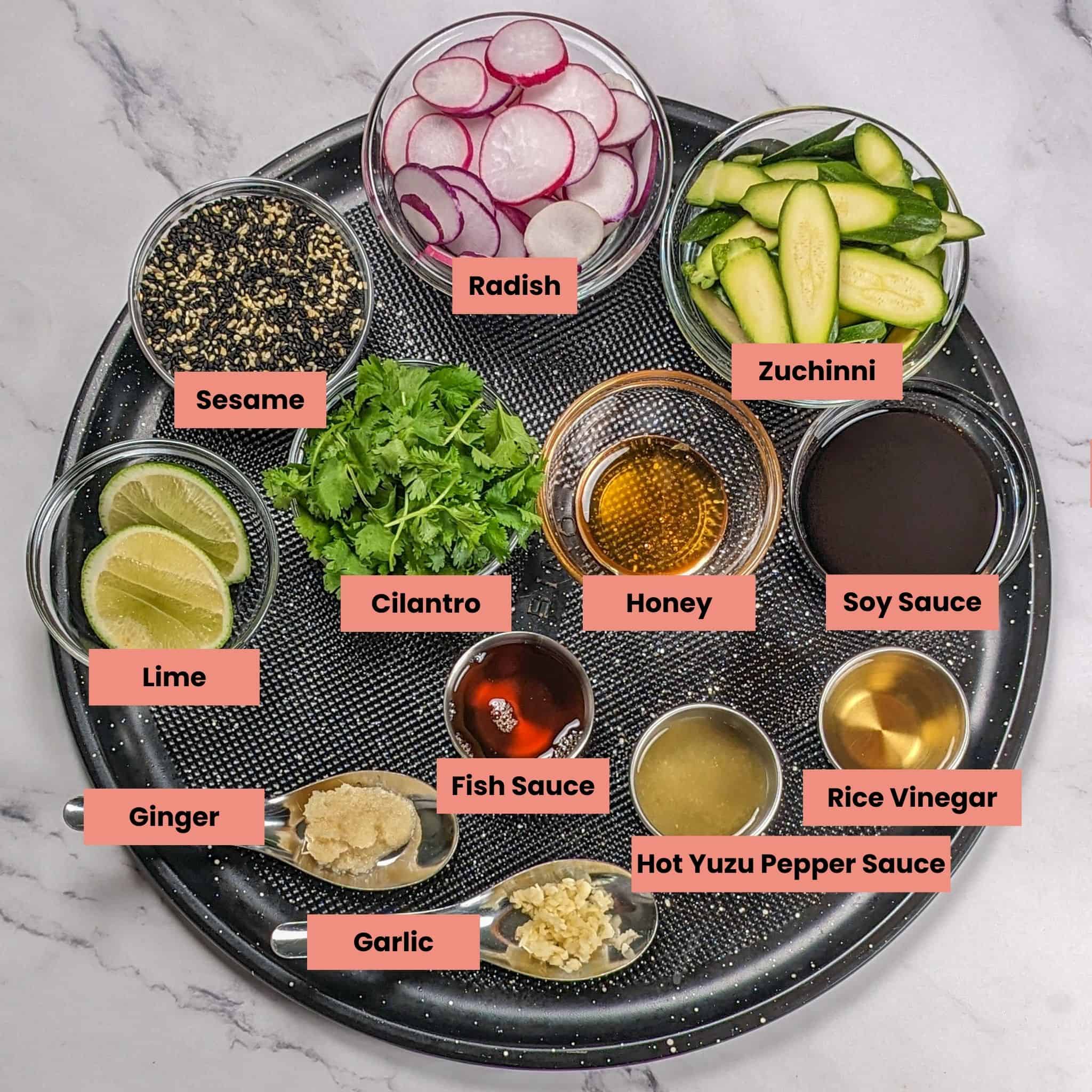
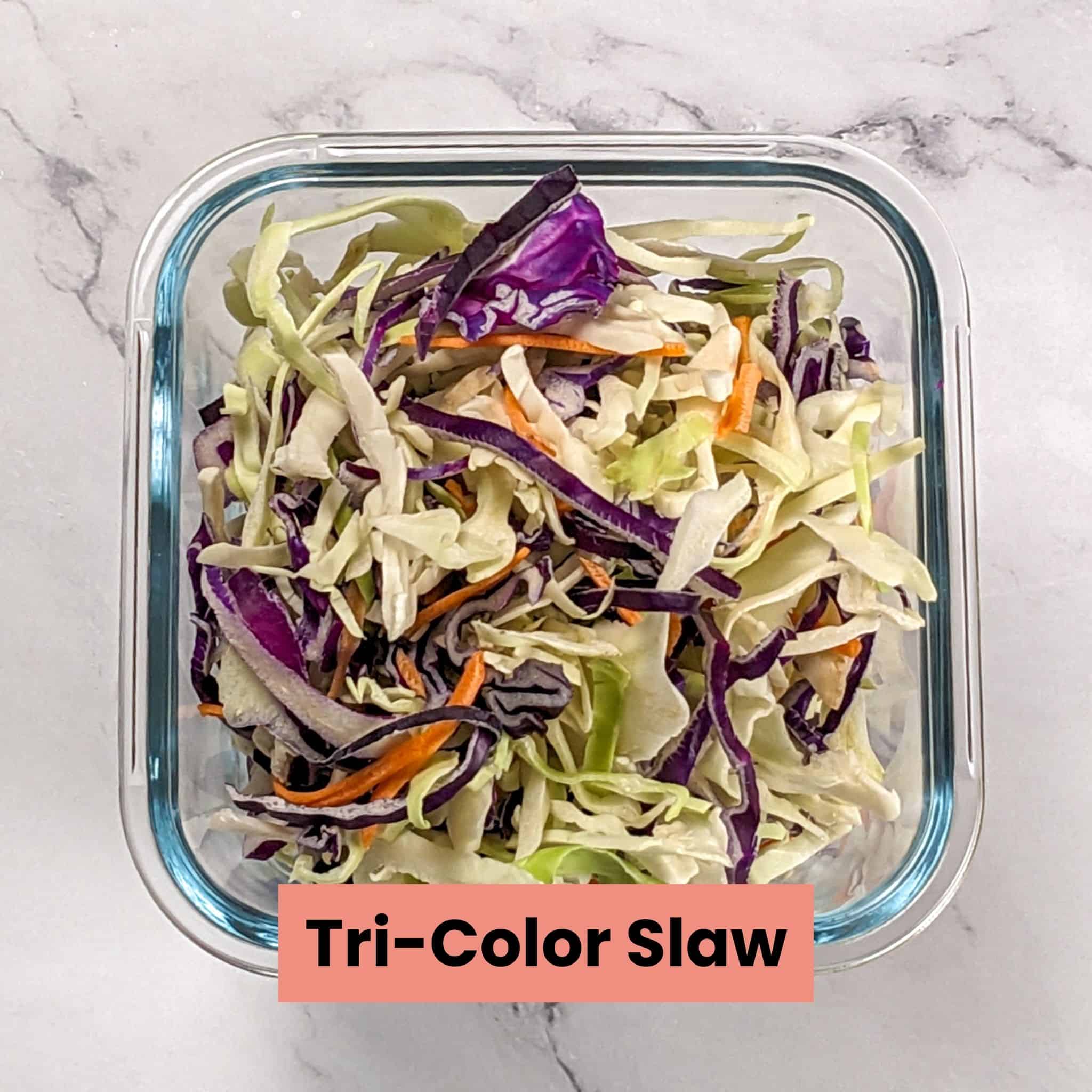
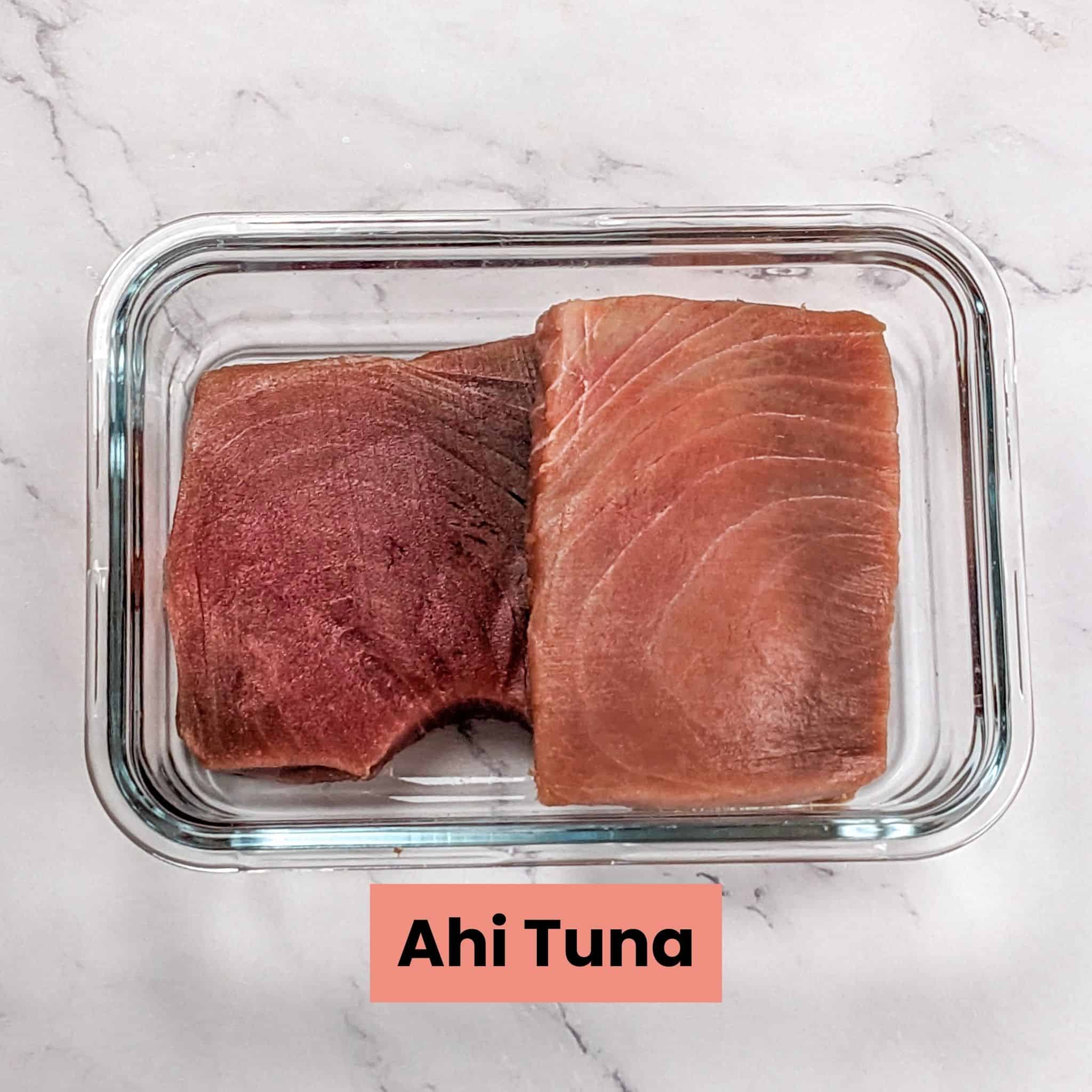
My Rating: ⭐⭐⭐⭐
Purchased: December 10, 2023
My Review: I love the clean, classic look of this Pyrex 3-piece glass mixing bowl set—it’s a staple in my kitchen. Pyrex is known for its durability, and these bowls definitely live up to that reputation. I use them for everything from mixing batters to storing leftovers, and the fact that they’re microwave-safe makes them super multifunctional. They’re also easy to clean and stack nicely in the cabinet. The only reason this isn’t a five-star for me is because I always have that little fear of breaking them when I’m using or storing them, even though they’re made to last.
Instructions with Pictures
Follow the instructions and cooking tips below using the step-by-step picture guide.
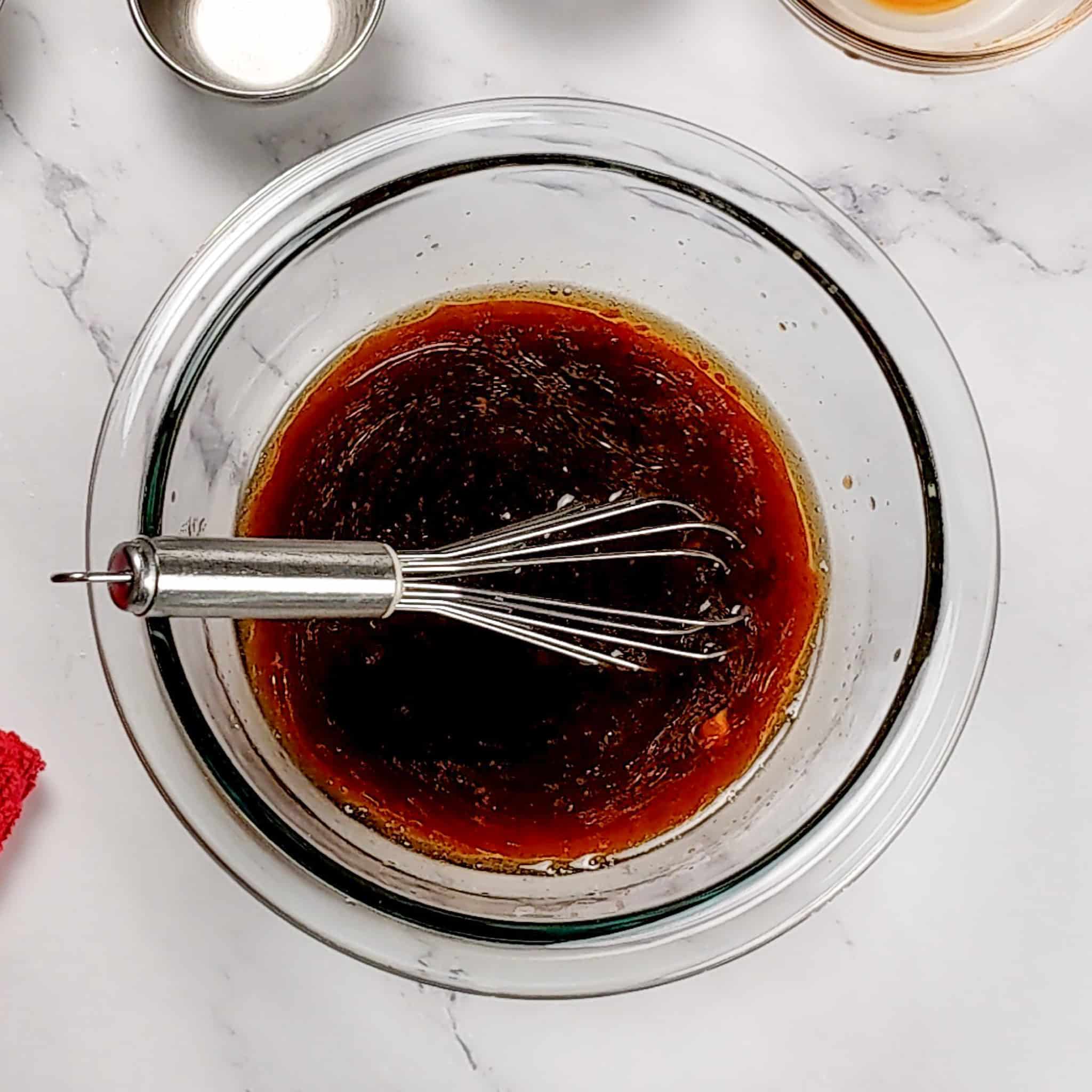
Vigorously whisk the dressing to break down the sesame oil and mix it with the remaining ingredients. To adjust the taste, taste the dressing with what you will serve it with, such as a slice of cabbage or radish.
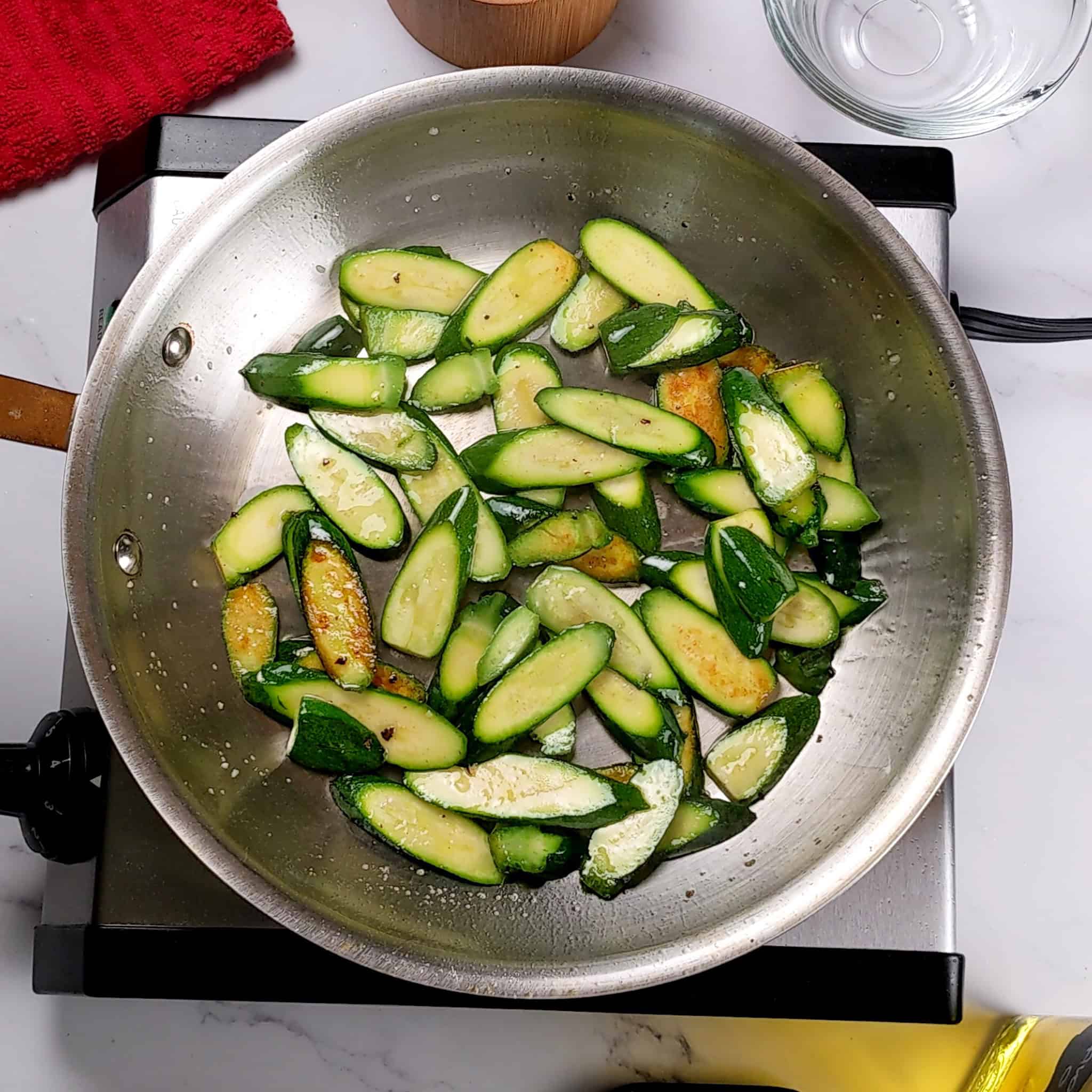
Browning the zucchini will bring out more flavor to the dish.
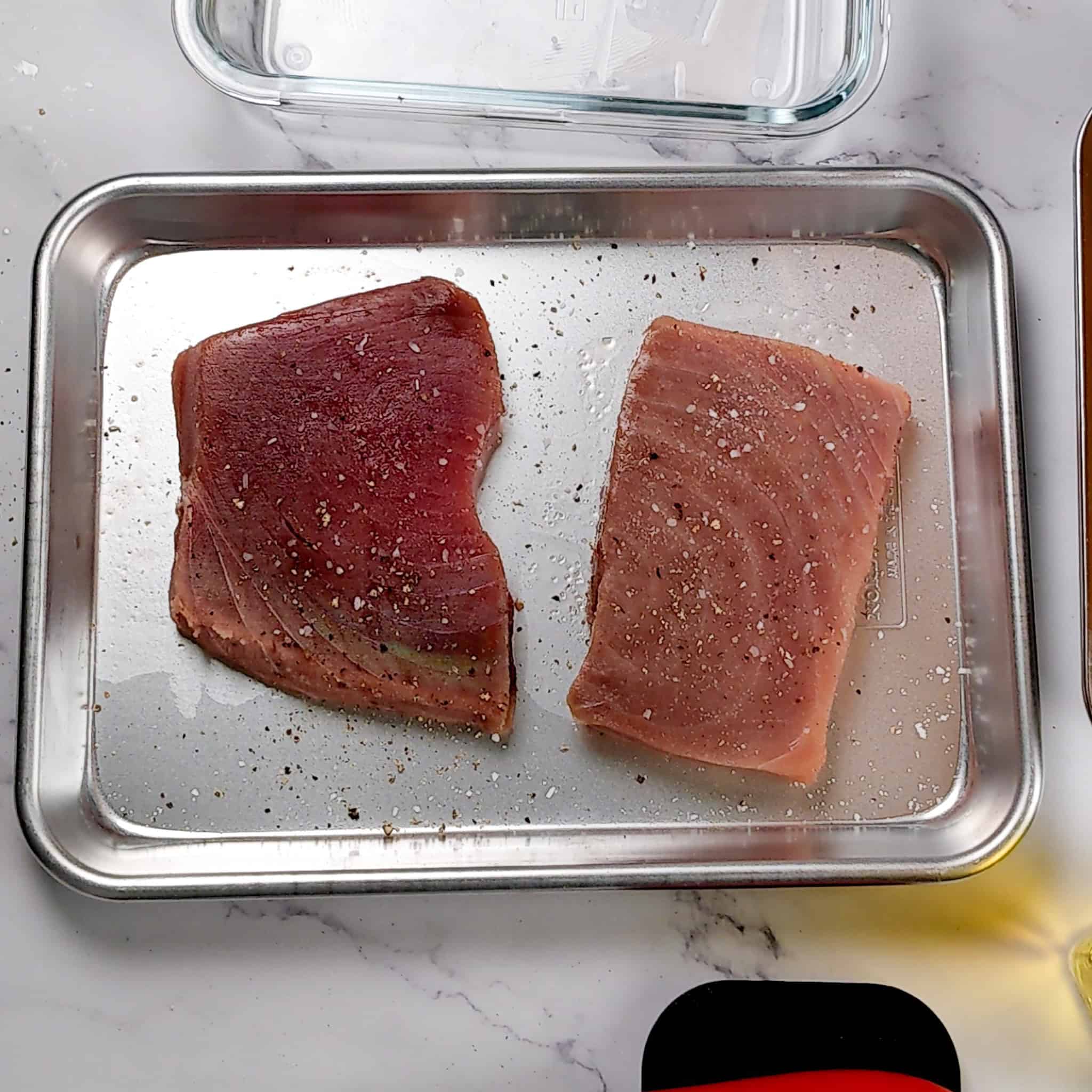
Ensure to pat the tuna dry to allow excellent searing. Also, remember the direction of the grains (lines) and plan ahead on how to slice the tuna. For maximum tenderness, you want to cut against the grain.
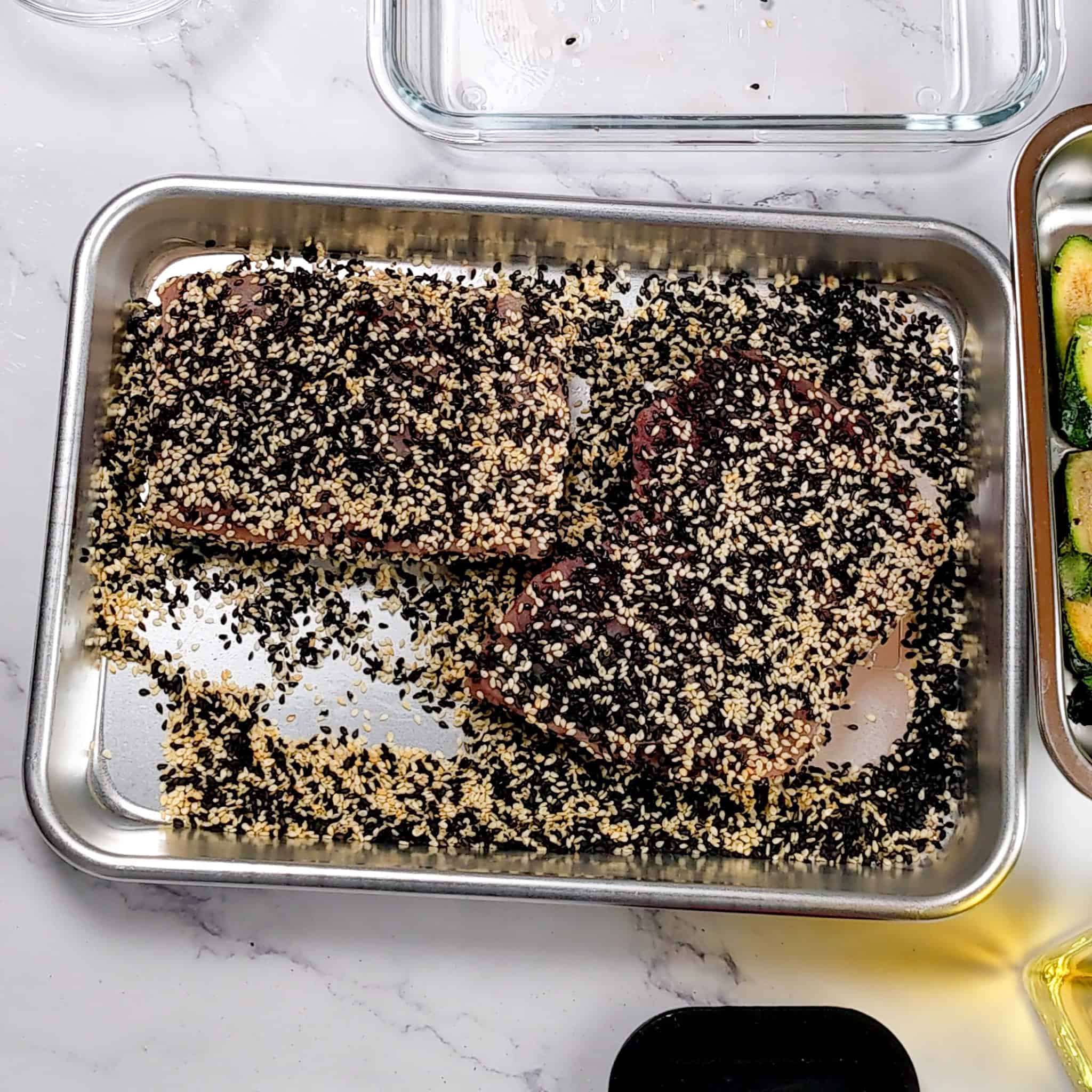
Laying the seeds on a wide tray allows for even coating; press the tuna into the seeds.
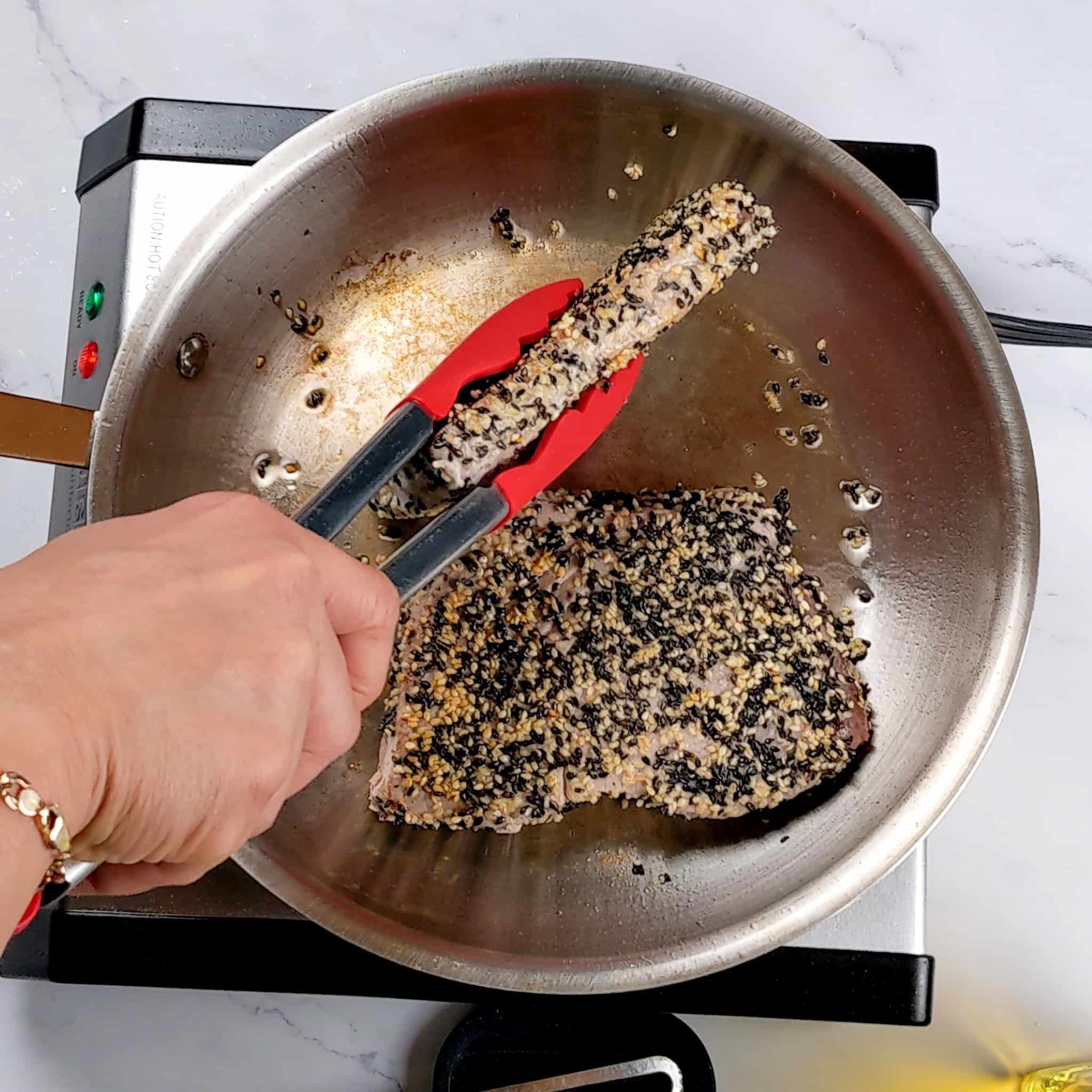
Brown the tuna on each side for a nice presentation, but sear on the shorter sides for only 30 seconds compared to the longer sides for 1 minute.
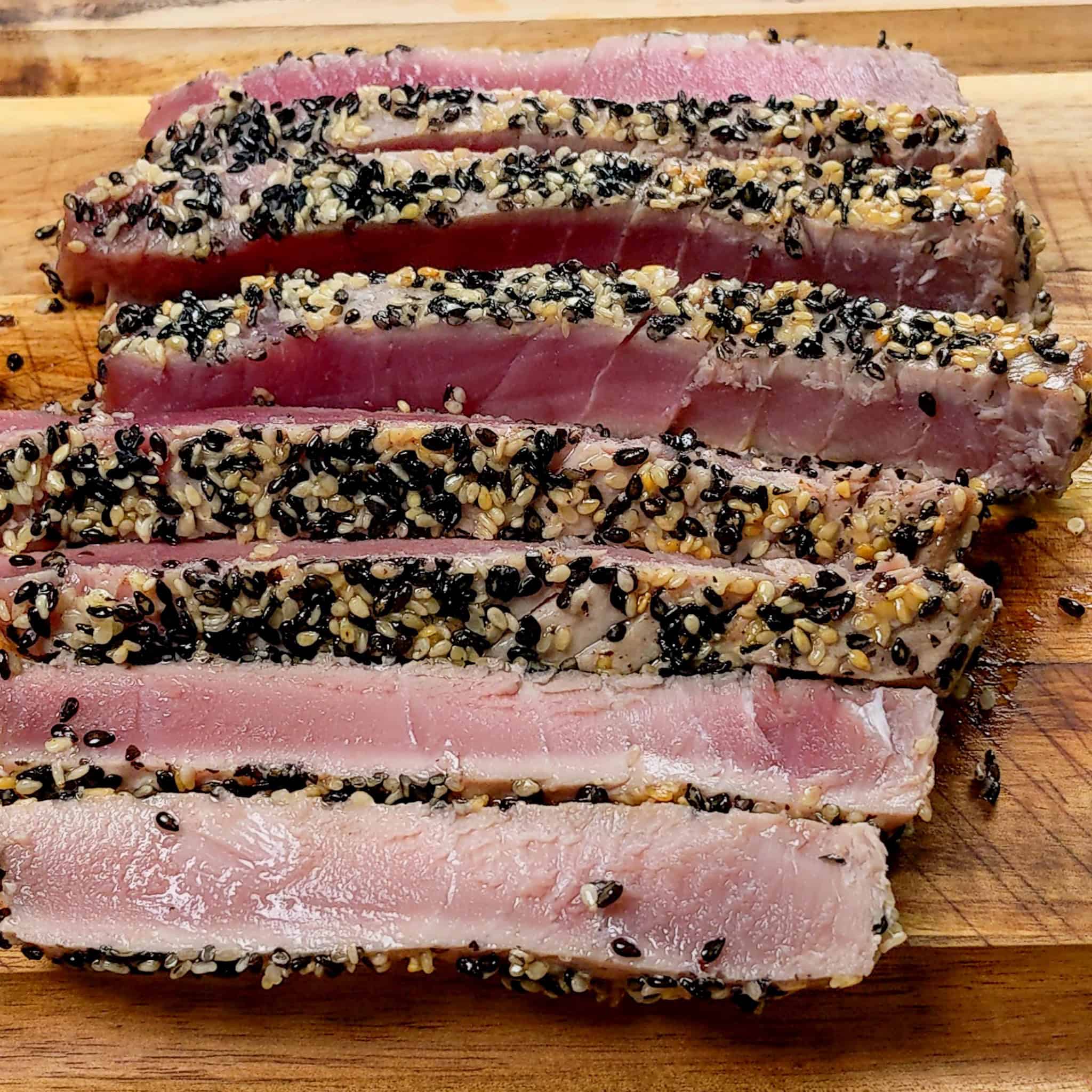
Slice the tuna no thicker than ½ an inch. The thinner you slice it, the more tender it will be.
My Rating: ⭐⭐⭐⭐
Purchased: 11/01/21
Update: 08/19/24
My Review: These tongs have been indispensable kitchen tools. Their sturdy build and heat-resistant silicone tips make them dependable for various cooking tasks, from flipping delicate fish fillets to pulling a hot oven rack, ensuring they're a valuable addition to my kitchen. The only problem I've had is grasping items with the tip. Silicone tongs are flexible and are not sturdy enough to pick heavy things with their tips. So I gave it a 4 out of 5. Hence, the reason why I still keep my metal tongs.

Watch: Slicing Radish!
My Rating: ⭐⭐⭐⭐⭐
My Review: I’ve had my Benriner Mandoline Slicer for over 20 years, and it’s still one of the most reliable tools in my kitchen. While I own the older model, the new version is nearly identical—featuring the same chef-trusted quality, sharp Japanese stainless steel blades, and simple, effective design. It’s been a huge help with meal prep, especially when I need consistent, thin slices fast. Benriner has always been the original go-to mandoline in professional kitchens, and for good reason—it just works. If you want to learn more about how to safely and efficiently use a Japanese mandoline, check out my full guide on the Japanese Mandoline here.
Substitutions
Dairy-Free
- This sesame-crusted ahi tuna steak recipe is already dairy-free.
Gluten-Free
- Low-Sodium Soy-Sauce - Use tamari or coconut aminos, which provide a similar savory flavor without the gluten content.
Vegetarian
- Ahi Tuna - Use tofu-pressed firm tofu, add finely chopped nori seaweed to the sesame seeds, and then press the tofu steaks into the seeds on all sides. Sear on medium heat for 2 minutes on each side, ensuring not to burn the seeds. Let it cool and slice.
Convenience
- Hot Yuzu Pepper Sauce - If you cannot find this, use 1 part lemon juice to 1 part lime juice and blend it with jalapeno or serrano chili peppers, Serano being hotter than jalapeno.
- Minced Garlic or Ginger - Use a popular blend of garlic and ginger paste known to be found in Indian or general Asian markets. Or use your food processor to blend it all and use the amount you need. 1 teaspoon equals one garlic clove or a thin slice of ginger.
- Baby Zucchini - Use Regular zucchini thinly sliced or yellow summer squash.
- Honey - Use white or brown sugar.
- Avocado Oil - Use a vegetable oil with a neutral flavor and high smoke point.
Change Heat Level - Modify the sesame seed-crusted tuna recipe's heat level to your liking and learn more about the Scoville Scale and Chili Pairings.
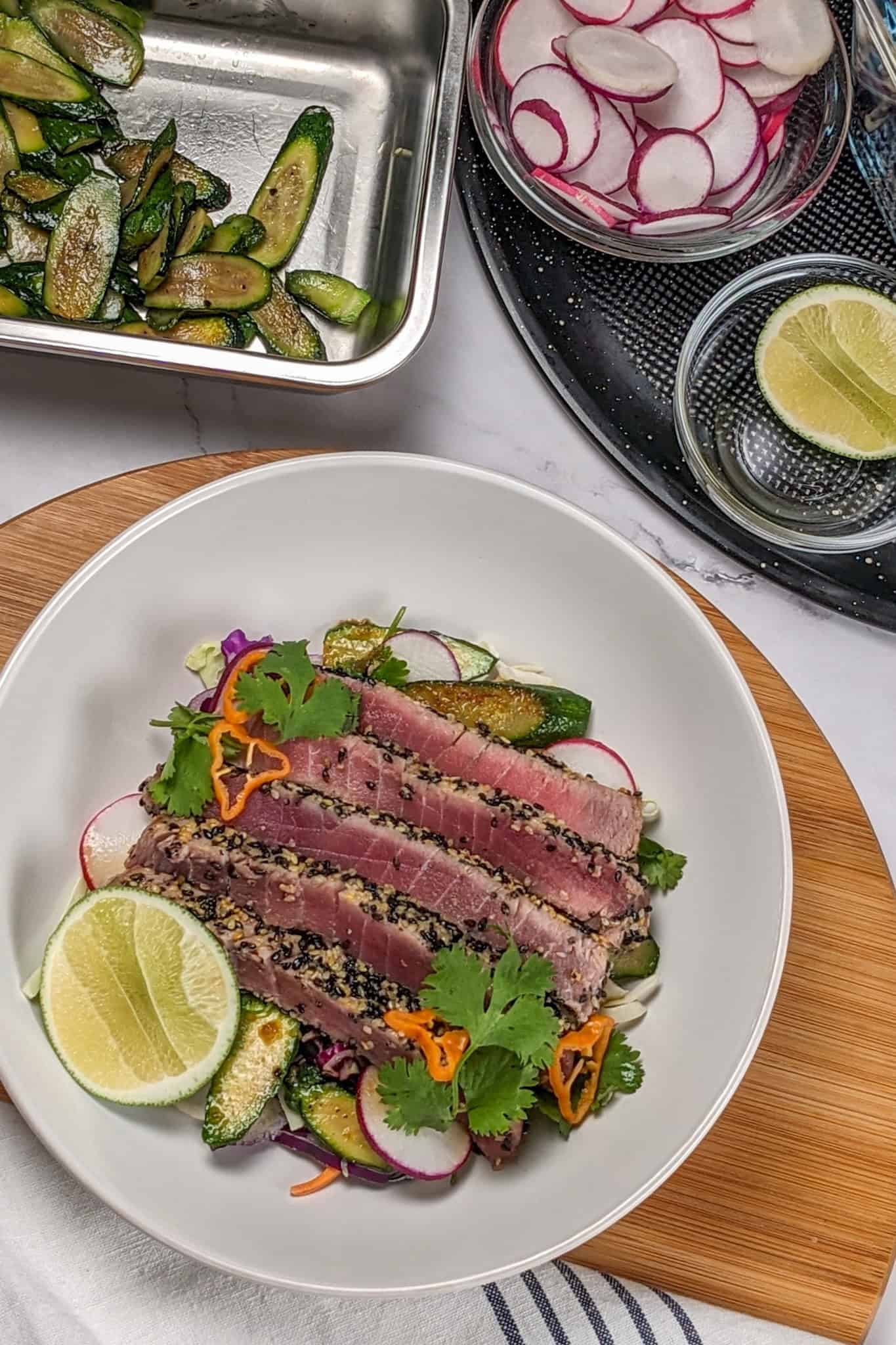
Variations
- Rice Bowl - Turn this dish into a rice bowl with sushi rice or brown rice.
Equipment
- Whisk - To blend the ingredients for the soy sesame sauce.
- Mixing Bowl - Used to make the dressing. For this recipe, I used the durable brand-trusted Pyrex Glass Mixing Bowls.
- Fish Spatula - This is optional, but it is good to have if you plan to cook a lot of fish. This is a wide, thin spatula used to flip and pick up delicate meat like fish. Try the OXO Good Grips Stainless Steel Fish Turner.
- Skillet - Use a skillet, frying pan, or cast-iron skillet. It is used to fry the sesame-crusted tuna. I used the 10-inch All-Clad D3 3-Ply Stainless Steel Fry Pan With Lid for this recipe.
- Paper Towels - These are used to pat the tuna dry to allow better searing. You can also just use a clean kitchen towel.
- Sheet Tray - Or a shallow dish. To spread out the sesame seeds to coat the tuna. For this recipe, I used the Nordic Ware ⅛ Sheet Pan.
Kitchen Must Haves - Find other tools I use here.
Storage
- Refrigerator - To store in the fridge, place the tuna, vegetables, and dressing in airtight containers. The meal will last up to two days. For meal prep, only add the tuna and vegetables together and store the dressing on the side to be added the day of serving.
- Freezer - Follow the refrigeration process mentioned above for the tuna. Only the tuna can be frozen in a labeled freezer resealable bag.
Airtight Food Containers
I interchange glass food storage containers with plastic clipping lids or wooden push-ins. I always suggest glass storage containers because they can be microwaved, they hold food without staining, and the glass keeps the food at a more stable temperature, keeping it fresher and longer. Try the OXO Good Grips Smart Seal Glass Rectangle Food Storage Containers or the Pyrex Freshlock Glass Food Storage Containers.
Cooking Tip
Your Cooking Tips Resource Guide - Become a better home cook with tips to help you cook more efficiently on the Cook's Notebook tab.
If you are buying ahi tuna, your best bet is to buy it frozen in steaks at your local grocery store labeled "sushi grade"; this increases the safe consumption of raw ahi tuna. Only use unfrozen if you are getting the freshest tuna straight from a local trusted fish market near the ocean.
Frequently Asked Questions
When buying sushi-grade tuna, search for steaks with a vibrant, deep red color and a firm texture. They should have a fresh, oceanic odor without any strong or fishy smells. If purchasing frozen tuna, check that the packaging is undamaged and lacks ice crystals, which would indicate proper storage.
The best way to cook ahi tuna is to quickly sear it over high heat for about 1-2 minutes on each side, resulting in a rare to medium-rare doneness. This method helps preserve the tuna's tenderness and natural flavor.
It’s important to ensure that the pan is very hot before adding the tuna to achieve a good sear without overcooking the inside.
Remember to store fresh ahi tuna in the coldest part of your refrigerator, ideally at 32°F. You can wrap it tightly in plastic wrap or place it in an airtight container. It's best to use it within 1-2 days.
You can freeze the tuna in vacuum-sealed bags or freezer-safe containers for longer storage. Be sure to use it within 2-3 months for the best quality.
Seafood Recipes
Looking for other Seafood recipes like this? Try these:
- Healthy Haitian-Style Creole Spicy Shrimp Pasta
- Seared Snapper Spicy Creole Sauce and Roasted Vegetables
- Grilled Shrimp Garlic Jalapeno Butter and Cilantro Lime Rice
- Spicy Cajun Shrimp Rice Bowl with Lemon Remoulade
Asian Recipes
Looking for other Asian-inspired recipes like this? Try these:
- Quick Spicy Potstickers | Chili Momo Tibetan Style
- How to Make Multigrain Rice | Purple Rice Recipe
- Lemongrass Marinated Grilled Chicken Spring Rolls
- Easy Sheet Pan Spicy Miso Salmon Rice Bowl
📖 Recipe
Sesame Seed-Crusted Ahi Tuna with Spicy Sesame-Soy Sauce
Ingredients
Spicy Sesame-Soy Dressing
- ¼ cup low-sodium soy sauce
- 2 tablespoons toasted sesame oil
- 2 tablespoons unseasoned rice vinegar
- 2 tablespoons hot yuzu pepper sauce store-bought
- 1 tablespoons honey
- 1 clove garlic minced
- 1 teaspoon fresh ginger grated
Slaw and Vegetables
- 9- ounce package of shredded green and red cabbage and carrots
- 6 red radishes tri-color, thinly sliced
- 1 baby zucchini thinly sliced
- 1 tablespoon avocado oil
- ½ cup fresh cilantro leaves
- Lime wedges for serving
Ahi Tuna
- 4 ahi tuna steaks about 6 oz each, sushi-grade, which comes frozen
- ½ cup black and white sesame seeds mixture
- 1 tablespoon avocado oil
- salt and pepper to taste
Equipment
- Paper Towels
Instructions
- Save time in the kitchen: Read the instructions thoroughly, then gather and prep all your ingredients before cooking! Learn Prepping Tips.
- Prepare the Spicy Sesame-Soy Dressing: Whisk together the soy sauce, sesame oil, rice vinegar, hot yuzu pepper sauce, honey, minced garlic, and grated ginger in a mixing bowl. Set aside.
- Prepare the Vegetables: Heat avocado oil in a large skillet over medium-high heat. Then, add the sliced zucchini and sear for about 2-3 minutes on each side until lightly browned and tender. Remove from the skillet and set aside.
- Prepare the Tuna: Pat the tuna dry with paper towels. Season the ahi tuna steaks with salt and pepper. Then, place the mixed sesame seeds on a tray. Press each tuna steak into the sesame seeds to coat all sides.
- Cook the Tuna: Heat avocado oil in a large skillet over medium-high heat. Then, sear the sesame seed-crusted tuna steaks for about 1-2 minutes on each side, depending on your desired level of doneness. The tuna should be rare to medium-rare inside. Remove from the skillet and let rest for a few minutes before slicing.
- Assemble the Dish: On each plate, arrange a bed of the tri-color slaw. Top with a portion of thinly sliced red radishes, seared baby zucchini, and fresh cilantro leaves. Drizzle the spicy sesame-soy dressing over the vegetables and salad. Slice the seared tuna steaks against the grain and place them on top of the slaw and vegetables.
- To Serve: Garnish with lime wedges on the side.
Video
Notes
Nutrition
Subscribe to my YouTube Channel.
SUBSCRIBE: 👈To my YouTube Channel to Get Notifications of New Videos.
Have a Comment or Question?
If you have a question or comment about this recipe, please post it below. You will definitely get a quick response. It also helps our other readers to stay informed. Thanks!

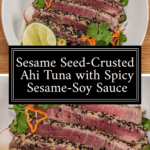
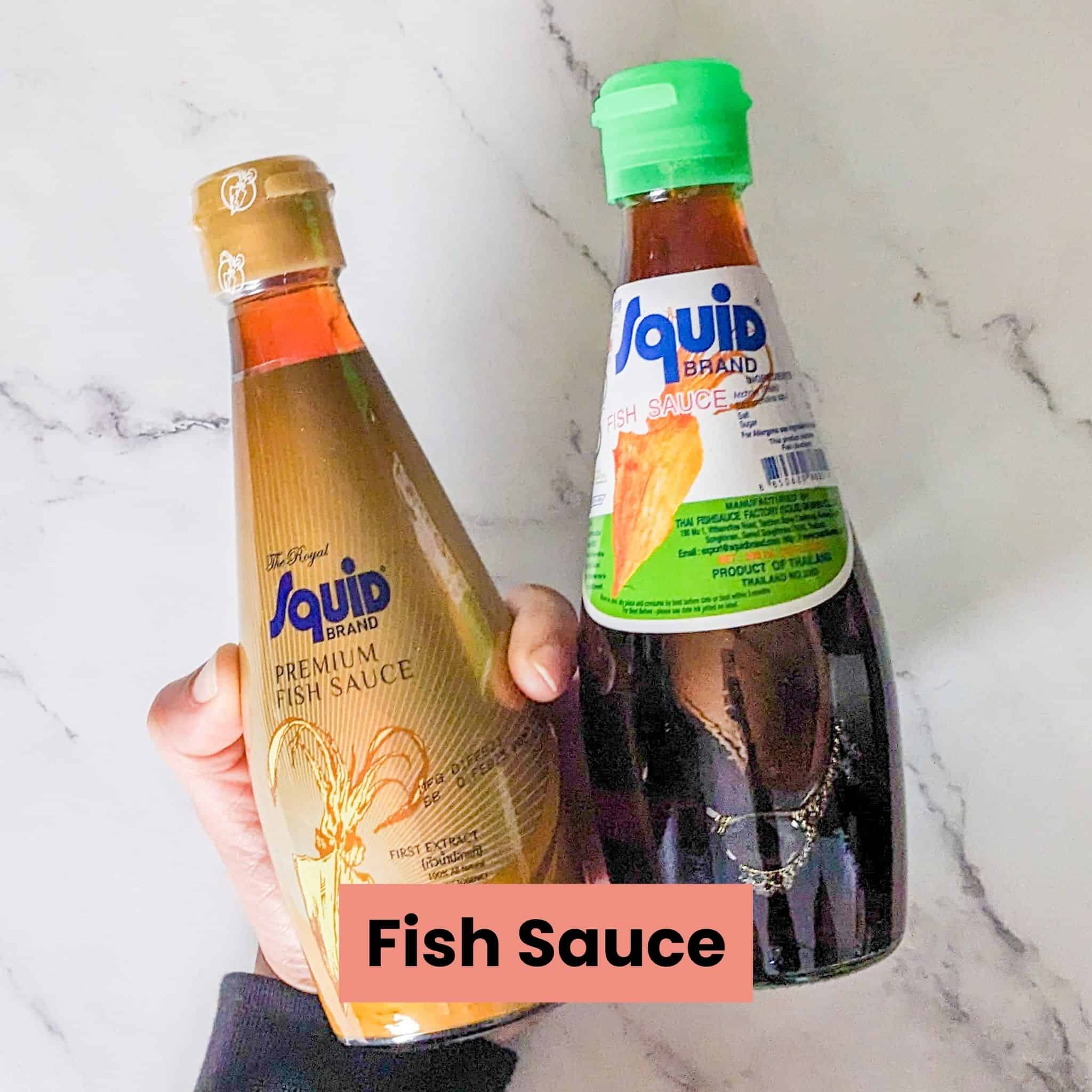
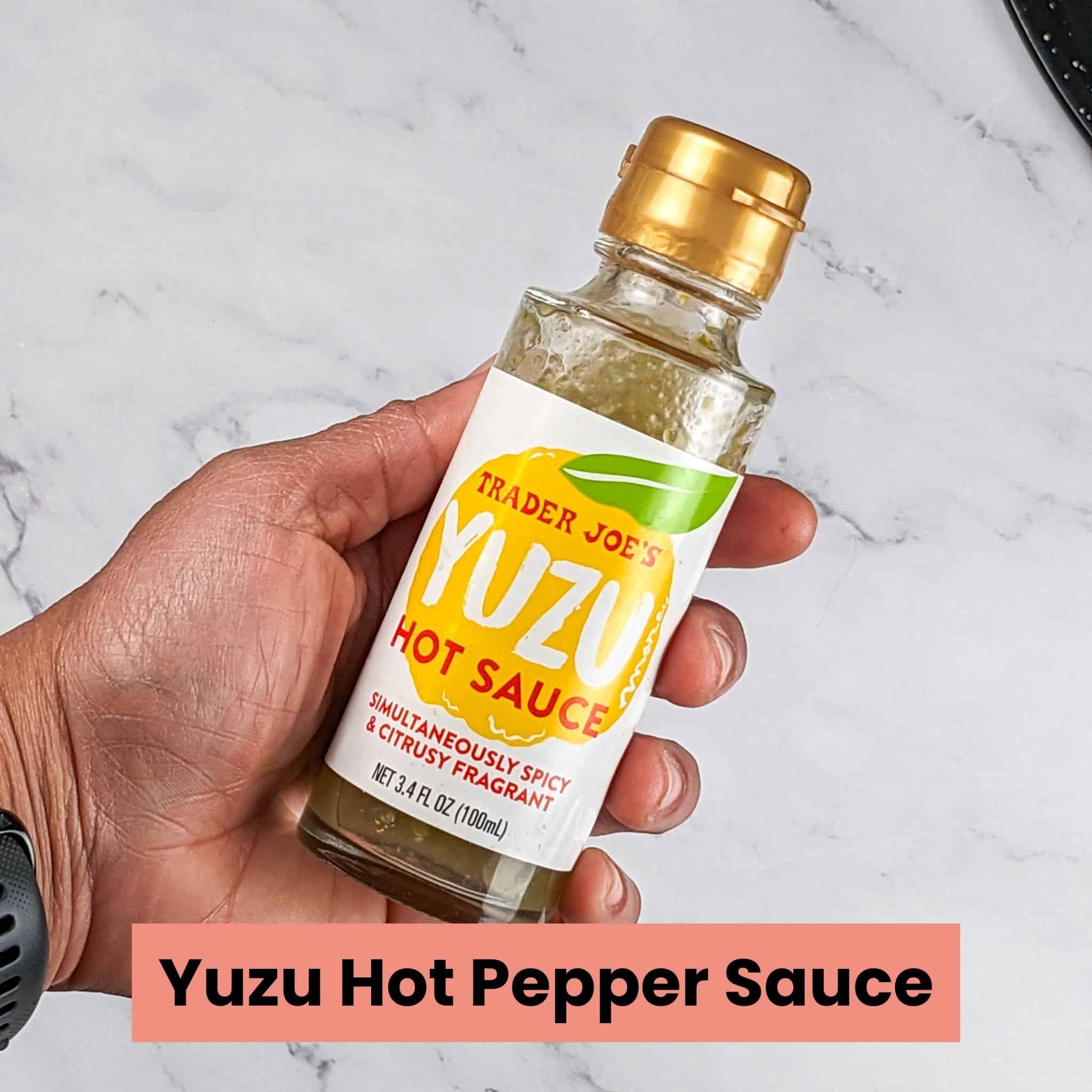
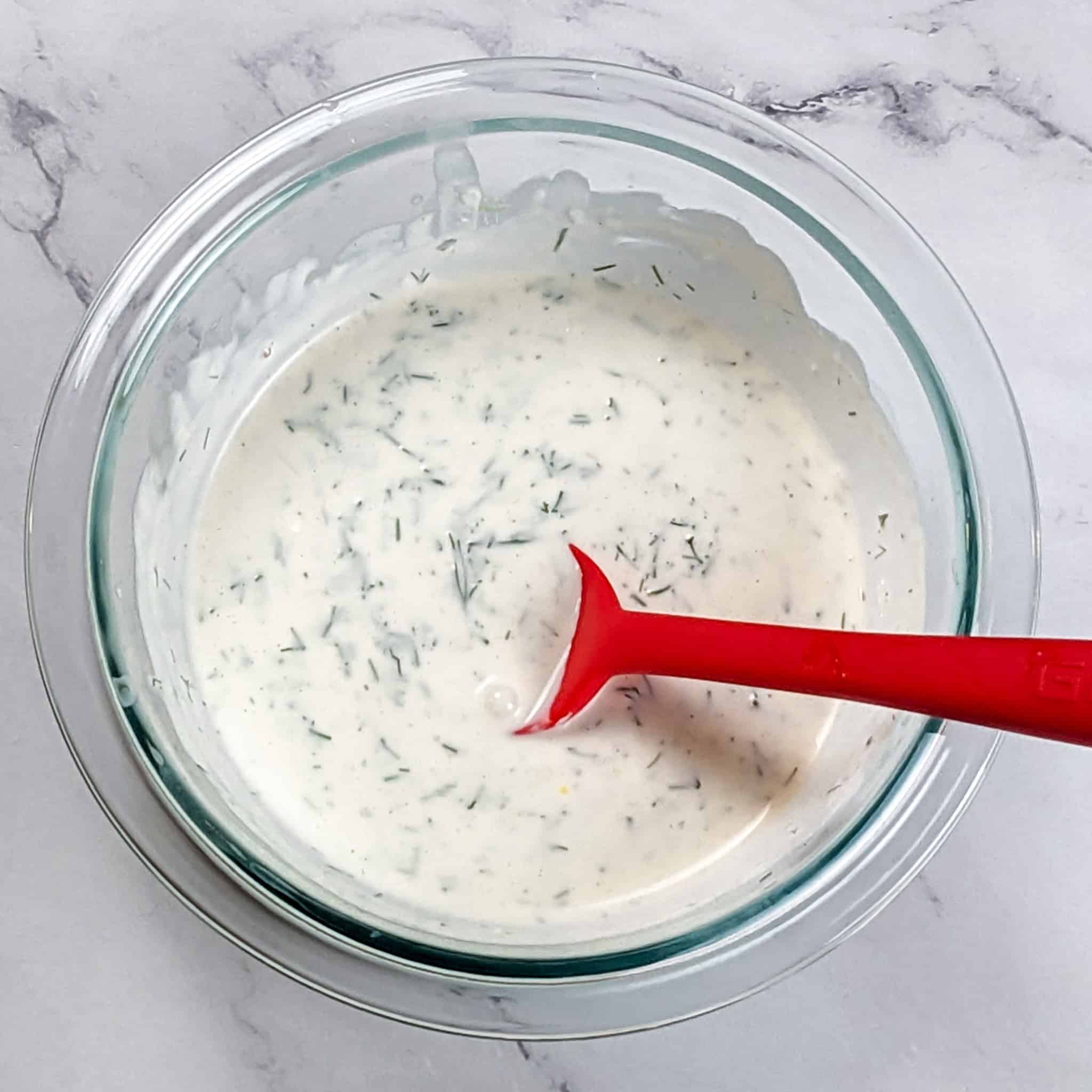
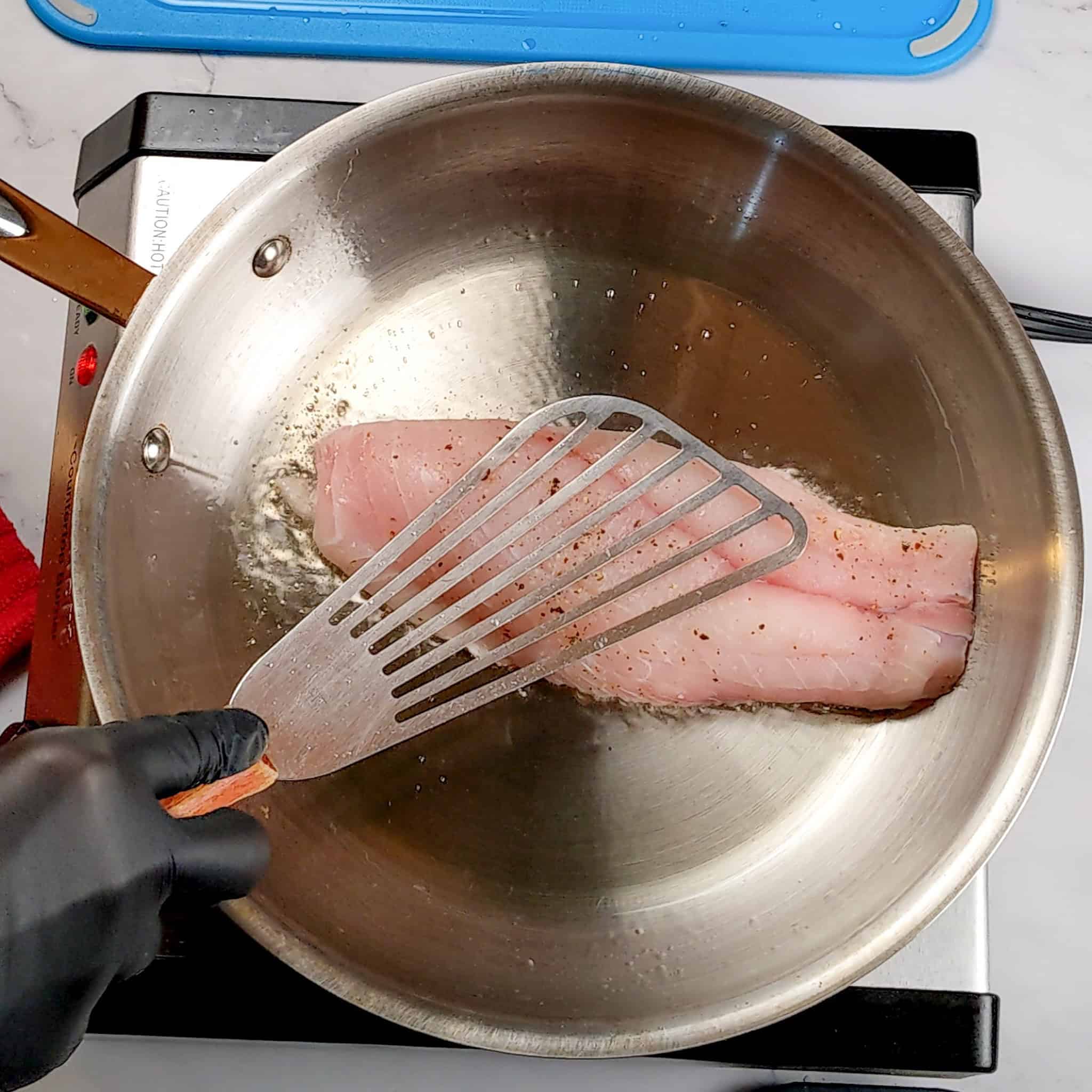


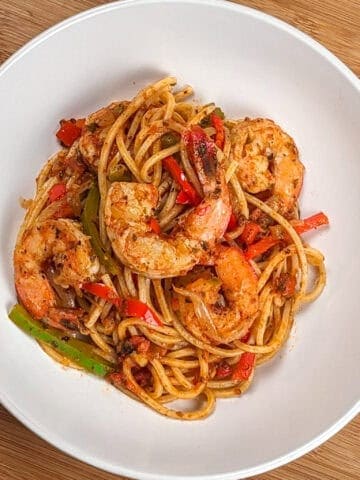
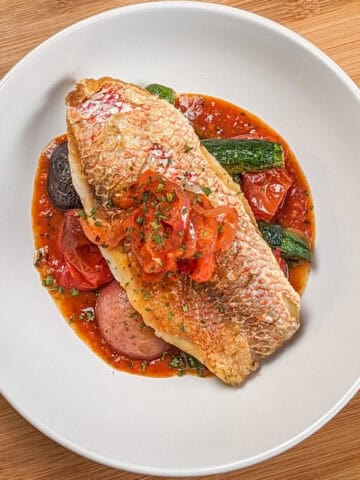
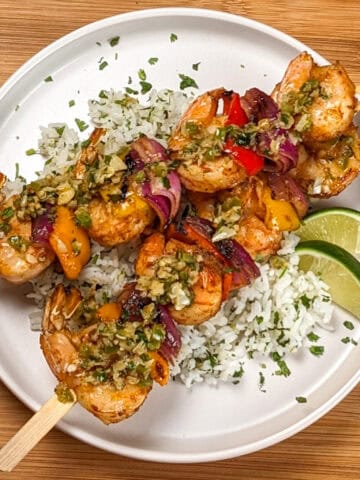
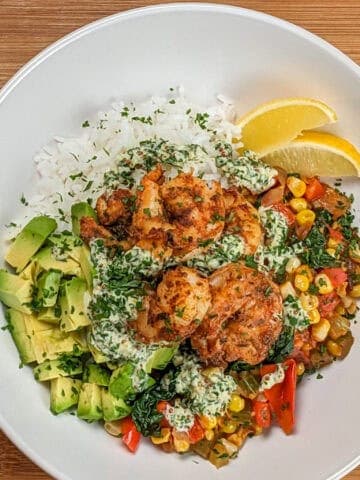
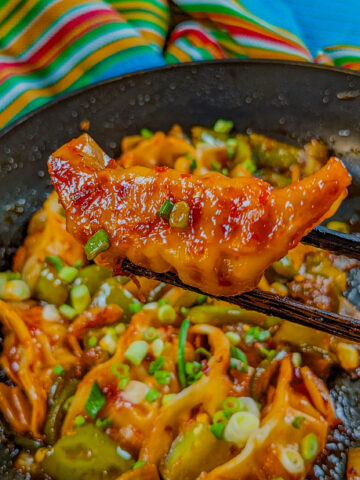
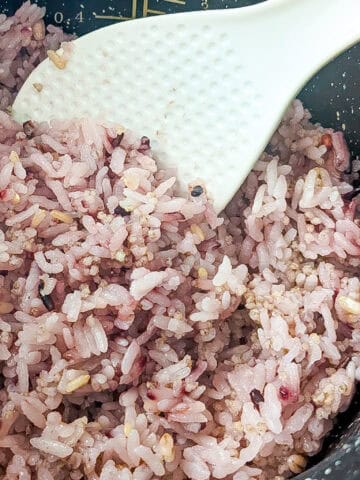
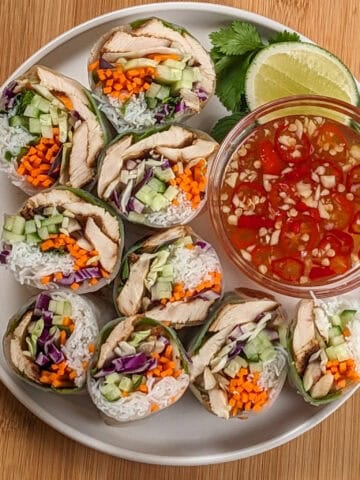
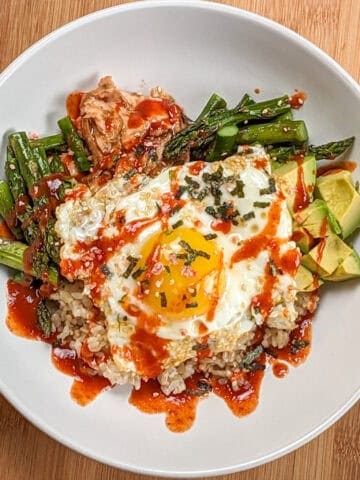
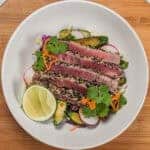
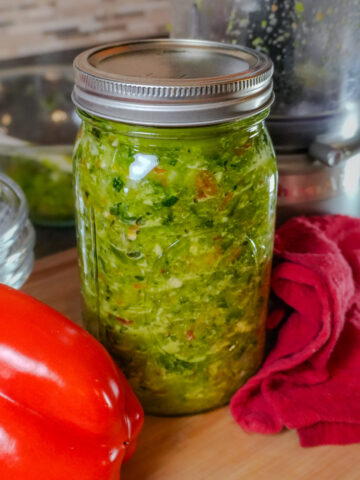
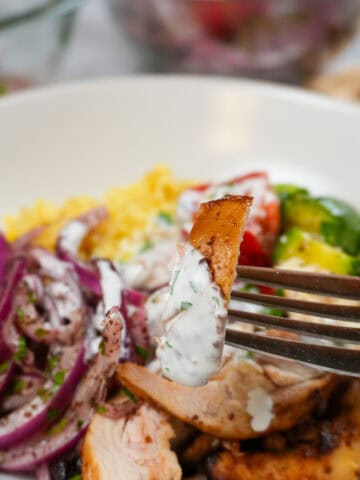

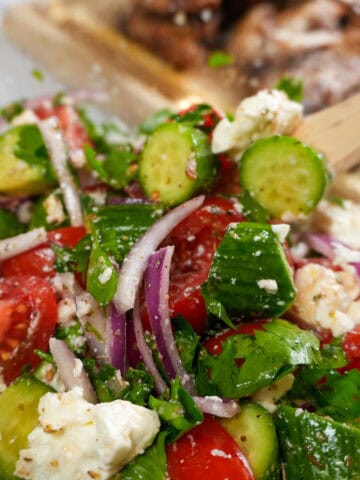
Leave a Reply